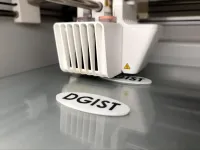(Press-News.org) Humans are no stranger to coronavirus (CoV) pandemics. Just like SARS-CoV-2 (the virus that causes COVID-19), another member of the coronavirus family--SARS-CoV--caused the severe acute respiratory syndrome (SARS) epidemic across parts of Asia in 2003. But, its spread was contained way faster than COVID-19. So, what makes SARS-CoV-2 so contagious?
Both SARS-CoV and SARS-CoV-2 viruses bear "spike proteins" which get inside our cells by binding to a protein called angiotensin-converting enzyme 2 (ACE2) that is found in our cells. However, the SARS-CoV-2 spike (S) protein has been found to have a higher binding affinity (10 to 20 times that of SARS-CoV) to ACE2, thus establishing a link between the pathogen and the protein.
Interestingly, recent studies have shown that patients with COVID-19 who have rhinosinusitis (i.e., inflammation of the nose) have a low risk of hospitalization. Moreover, the expression of ACE2 was reduced in patients with rhinosinusitis. Coincidentally, another study has shown that short-chain fatty acids (SCFAs), produced by bacteria in the gut have beneficial effects in allergy and viral infections. These separate findings prompted an investigation of the effect that SCFAs in the nasal cavity against SARS-CoV-2 infection by scientists from the University of Fukui, Japan, led by Dr. Tetsuji Takabayashi.
In a new study published in the END
Short chain fatty acids: An 'ace in the hole' against SARS-CoV-2 infection
Scientists find that short chain fatty acids can be used to reduce susceptibility to SARS-CoV-2 infection and mortality from COVID-19
2021-07-14
ELSE PRESS RELEASES FROM THIS DATE:
Scientists created several samples of glasses for protection against nuclear radiation
2021-07-14
An international research team, including physics from Russia, has created new glasses for protection against X-ray and gamma radiation. Scientists could select new components that improved the characteristics of the samples and allowed to reduce the amount of lead in the glass composition. Physicists engineered several samples of glasses. One of the latest results - glasses based on barium fluoride - was described by the team in the Optic magazine. But the best results have bismuth borate glasses. Its radiation protection characteristics (mean-free-path, half-value layer) are better than commercial ...
Electroconvulsive therapy linked to longer hospital stays, increased costs
2021-07-14
HERSHEY, Pa. -- Electroconvulsive therapy, which may be effective at lowering long-term risks of suicide and death among patients with certain mood disorders, may result in longer hospital stays and increased health care costs, according to Penn State College of Medicine researchers. They said delivering the therapy in outpatient settings may make the treatment more cost-effective.
Electroconvulsive therapy (ECT) -- which involves passing small electric currents through the brain to trigger brief seizures while a patient is under anesthesia -- is seldom utilized in the U.S. due ...
Community health workers identify health-related social needs in patients
2021-07-14
Community Health Workers Can Play a Role in Identifying Health-Related Social Needs in Patients
Addressing patients' health-related social needs, like housing and food security, is integral to patient care. Federally Qualified Health Centers are leaders in screening for and addressing patients' health-related social needs. However, screening practices vary. This variation is relatively unexplored, particularly with regards to organizational and state policy influences. Study authors conducted in-person, qualitative interviews at Michigan FQHCs to examine how screening approaches vary ...
A new sensitive tool for the efficient quantification of plant disease susceptibility
2021-07-14
While several biology techniques have undergone significant technical advances that have allowed their high-throughput implementation, assessing the resistance levels of plant varieties to microbial pathogens remains an arduous and time-consuming task. In response to this, Pujara and collaborators took advantage of the naturally occurring luminescence of a deep-sea shrimp to engineer a light-producing bacterial reporter that allows the quantification of plant resistance levels through imaging.
The Nanoluc luciferase (NL) from Oplophorus gracilirostris is a small protein characterized by its high stability and strong brightness. The researchers exploited these features to produce a light emitting bacterial strain from the Pseudomonas syringae species, ...
Seven degrees from one trillion species of microbes
2021-07-14
The Earth contains about one trillion species of microbes -- only about one-tenth of which have been identified. A single human can house 100 trillion microbes, creating a single microbiome that serves an ecosystem of microbes.
Microbes connect and transform in myriad ways, creating and combining and separating microbiomes anew. How can we begin to parse out how microbiomes differ, how they are similar, how they evolved and how they may change in the future?
An international team of researchers may have the answer. They published a scale-free, fully connected search-based network to explore the connectedness ...
Virtual care: Choosing the right tool, at the right time
2021-07-14
Kumara Raja Sundar, MD, a family physician at Kaiser Permanente of Washington, uses two media synchronicity theory principles - conveyance and convergence - as a framework for choosing the right medium of care for his patients. In this essay, Sundar discusses how operating within this framework changed his own practice and decision making during the COVID-19 pandemic, particularly with the use of telemedicine versus in-person clinic visits. The theory of conveyance focuses on transmitting and processing diverse information to understand a situation. It requires time to analyze data, create patterns and make conclusions. Convergence focuses on discussing pre-processed information to achieve a mutual understanding of it. ...
Drug combination shows meaningful responses for malignant peritoneal mesothelioma patient
2021-07-14
HOUSTON - A phase II study led by researchers from The University of Texas MD Anderson Cancer Center found that treatment with atezolizumab and bevacizumab was well-tolerated and resulted in a 40% objective response rate in patients with advanced malignant peritoneal mesothelioma, a rare cancer in the lining of the abdomen. Responses occurred in patients regardless of PD-L1 expression status and tumor mutation burden.
Trial results indicated that the combination was safe and effective in patients with disease progression or intolerance to previous chemotherapy ...
Experts tackle modern slavery in Greek strawberry fields using satellite technology
2021-07-14
A consortium of modern slavery experts, led by the University of Nottingham, have assisted the Greek government to tackle a humanitarian crisis unfolding in the strawberry fields of southern Greece.
Using satellite technology to identify migrant settlements - a technique pioneered by the university's Rights Lab - and working with the Greek authorities, the experts then developed a decision model for which they could prioritise victims that were at highest risk.
Leading the study, the Rights Lab combined different data sources and methods to build a set of criteria measuring the extent of labour exploitation in a settlement. The academics then validated these criteria with a government agency and a Non-Governmental ...
Solar radio signals could be used to monitor melting ice sheets
2021-07-14
The sun provides a daunting source of electromagnetic disarray - chaotic, random energy emitted by the massive ball of gas arrives to Earth in a wide spectrum of radio frequencies. But in that randomness, Stanford researchers have discovered the makings of a powerful tool for monitoring ice and polar changes on Earth and across the solar system.
In a new study, a team of glaciologists and electrical engineers show how radio signals naturally emitted by the sun can be turned into a passive radar system for measuring the depth of ice sheets and successfully tested it on a glacier in Greenland. The technique, ...
Lean and mean: Building a multifunctional pressure sensor with 3D printing technology
2021-07-14
The treatment of many medical issues like abnormal gait and muscular disorders require an accurate sensing of applied pressure. In this regard, flexible pressure sensors that are simple, lightweight, and low-cost, have garnered considerable attention. These sensors are designed and manufactured through "additive manufacturing," or what is more commonly called "3D printing," using conductive polymer composites as their building blocks.
However, all 3D-printed pressure sensors developed so far are limited to sensing applied forces along a single direction only. This is hardly enough for real ...
LAST 30 PRESS RELEASES:
Electrodes created using light
Second-hand gift-giving is a well-deliberated decision
How human interaction drove evolution to make bears less aggressive
National Poll: Few parents offer teens guidance on healthy eating during holiday season
Cannabis derivatives could provide new ovarian cancer treatments
Raising strong yeast as a petroleum substitute
Clues to the origin of hot Jupiters hidden in their orbits
Canada’s reduced pledge to Global Fund will impact domestic health
1 in 4 children with major traumatic injuries not cared for in pediatric trauma centres
Duke and Duke-NUS’ joint cross-population research to uncover "East-West" differences in disease and care
Scientists to ‘spy’ on cancer- immune cell interactions using quantum technology breakthrough
Tech savvy users have most digital concerns
Making lighter work of calculating fluid and heat flow
Normalizing blood sugar can halve heart attack risk
Lowering blood sugar cuts heart attack risk in people with prediabetes
Study links genetic variants to risk of blinding eye disease in premature infants
Non-opioid ‘pain sponge’ therapy halts cartilage degeneration and relieves chronic pain
AI can pick up cultural values by mimicking how kids learn
China’s ecological redlines offer fast track to 30 x 30 global conservation goal
Invisible indoor threats: emerging household contaminants and their growing risks to human health
Adding antibody treatment to chemo boosts outcomes for children with rare cancer
Germline pathogenic variants among women without a history of breast cancer
Tanning beds triple melanoma risk, potentially causing broad DNA damage
Unique bond identified as key to viral infection speed
Indoor tanning makes youthful skin much older on a genetic level
Mouse model sheds new light on the causes and potential solutions to human GI problems linked to muscular dystrophy
The Journal of Nuclear Medicine ahead-of-print tip sheet: December 12, 2025
Smarter tools for peering into the microscopic world
Applications open for funding to conduct research in the Kinsey Institute archives
Global measure underestimates the severity of food insecurity
[Press-News.org] Short chain fatty acids: An 'ace in the hole' against SARS-CoV-2 infectionScientists find that short chain fatty acids can be used to reduce susceptibility to SARS-CoV-2 infection and mortality from COVID-19






